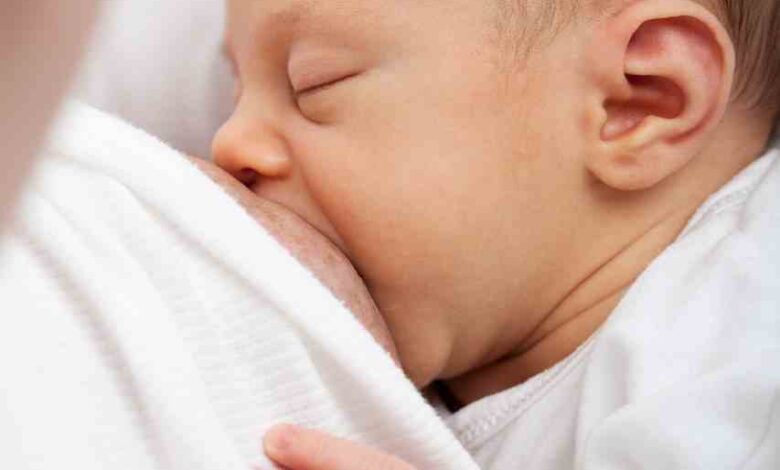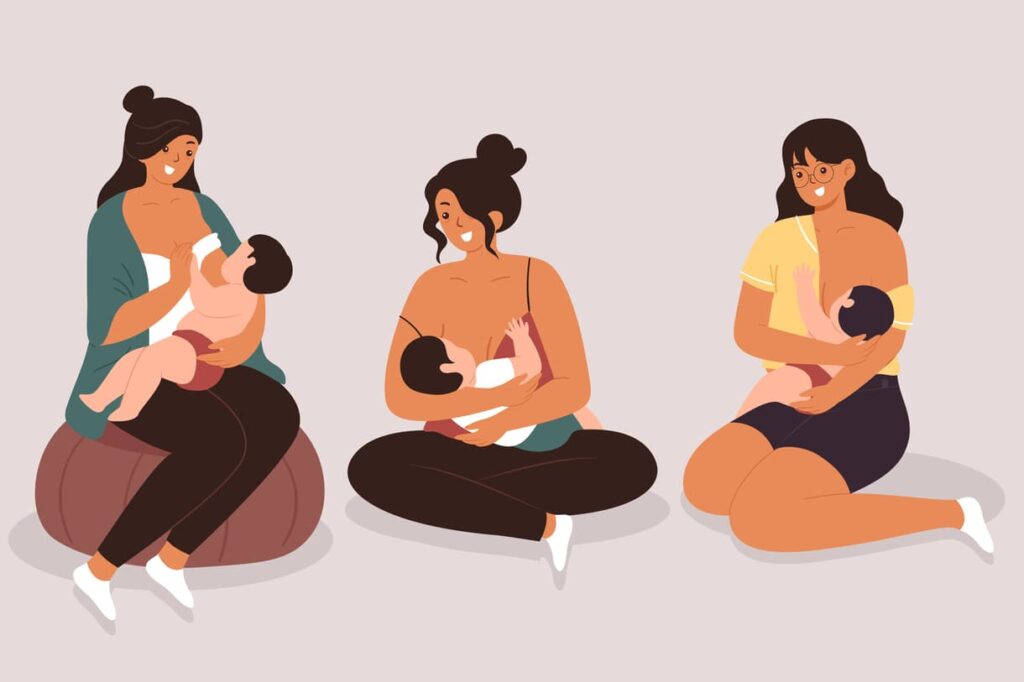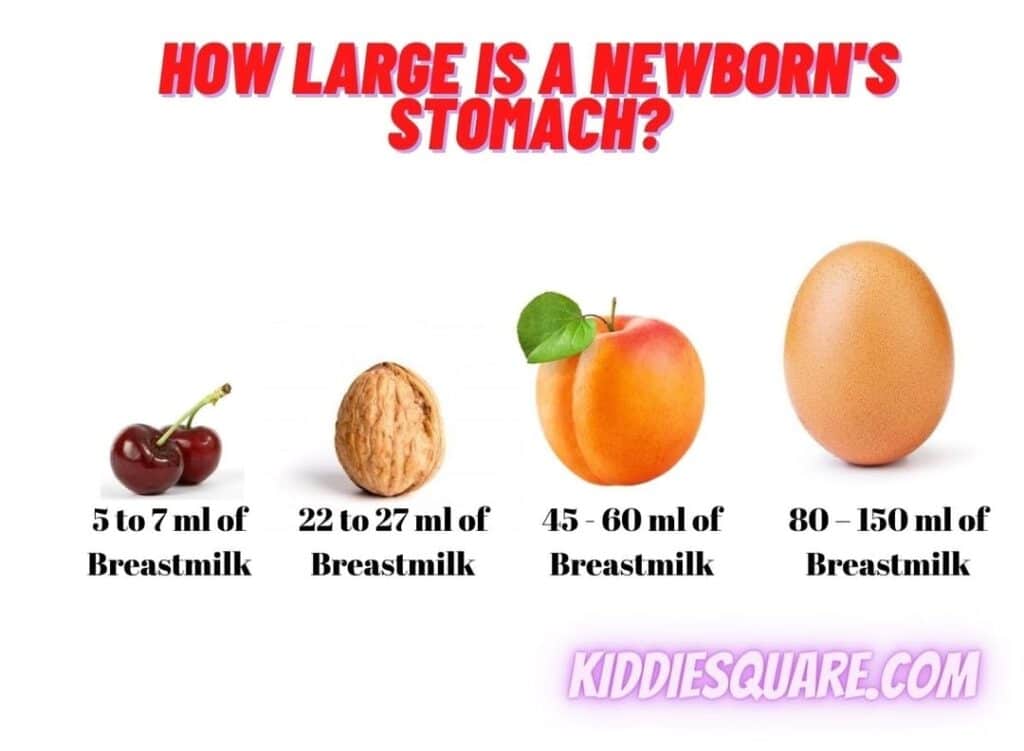How Much Breastmilk Does a Newborn Need at Each Feeding

Are you having difficulties calculating the quantity of breast-milk your baby need? Do you how much breastmilk does a newborn need at each feeding?
For parents and caregivers it important that you’ve this important information at hand.
Breastfeeding your newborn is one of the good attachment feeling a mother can have. from my experience, i will say it is not that easy from the start.
But, in an event where you are very fortunate to nurse without problems, there is an appreciable level of skin-to-skin time with your baby and a genuine feeling of strengthening.
Table of Contents
When to Start Breastfeeding
breastfeeding should start in the earliest hour of a child’s birth to the world. This first milk provide the baby a significant amount of colostrum from the minute a baby first held onto the breast on to feed.
Colostrum is a thick, resistance-building, and antibody–rich early breastmilk, which provides the protection and assurance a child needs to develop strong and healthy.
As a new mom after the birth of my baby, I begin to ponder on some questions: How much breastmilk does a newborn need at each feeding? How frequently should I feed my newborn baby? How large is a newborn’s stomach? What amount of breast milk does an infant need daily?
I explored the most dependable sources to get answers to all of the above questions. So, come along with me as i share more light to all these pressing questions.
How Large Is a Newborn’s Stomach?
After childbirth (1), your infant’s stomach Is about the size of a cherry on the very first day and holds only 5 – 7 ml or 0.17 – 0.24 ounce of milk. For these reasons, an infant can eat at least 8 – 14 times each day for the week.
The stomach develops rapidly every day, and by the third day, the stomach is about the size of a walnut and can hold 22 – 27 ml or 0.7 – 0.9 ounce of milk. By day 7 your baby’s belly is about the size of an apricot and can grasp 45 – 60 ml or 1.52 – 2.02 ounces of milk.
The quantity of milk an infant can consume will expand exponentially leading forth. By one month, your infant’s belly is about the size of a big egg and would now be able to hold between 80 – 150 mL or 2.7 – 5.01 ounces of milk for each feeding.
How Much Breastmilk Does a Newborn Need at Each Feeding?
Newborn babies behave differently and their needs for milk or appetite differ. A few infants latch promptly and eat well from the very beginning.
Others could be sluggish and struggles to latch on by any means. It is kind of unclear to know how much milk your baby is getting per feeding.

Trying to peg the amount of milk a baby need at each feeding is difficult. However, there are guidelines available to give you an idea on how much breastmilk a newborn need at each feeding and what to expect.
The First 24 Hours
In the next few hours when your child figures out how to feed and your body reacts by producing more amounts of milk, is critical in setting up the rest of your breastfeeding experience.
Be that as it may, don’t anticipate that your Milk supply would increase right away.
Overall, your sweet little angel will consume about a teaspoon of colostrum (the first milk before the milk production truly kicks in) per feeding in the initial 24 hours, which is ideal for their little stomach.
Your child’s belly is so little and can just hold only 5 to 7 ml or 1 and a half teaspoons of breastmilk at each feeding. Since your child’s stomach is so little, you’ll have to take care of her (feeding) continually in the initial 24 hours (2).
Notwithstanding the dietary and well-being advantages of colostrum for your infant is huge.
An increase in feeding or pumping breast-milk to bottle tells your body that your infant will soon request for food, so more milk are required to meet your baby’s growing needs.
The Day Three
On the third day, your child’s belly will have become bigger like the size of a walnut. In only a brief time, the quantity of breast-milk that an infant consumes would have doubled.
Your child’s belly will currently have the option to hold between 22 to 27 ml or ¾ to 1 ounce at each feeding.
Taking care and feeding your little angel at least 8 – 10 times each day in the first week after birth will help to create a solid and adequate milk supply in the future(3).
One Week Mark
At this stage, mom’s body changes from making colostrum to delivering more develop milk to meet the advancing needs of a growing child.
However, the occurrence is different for every mom, it could take more time for certain mothers.
Whichever your case may be, work with your baby’s pediatrician to be sure your infant is getting the right measure of nourishment until your milk production rises.
Most times, around the 1-week point, moms will begin generating around 500 ml or 16 ½ ounces of milk per 24 hours. Your newborn’s belly will have developed to hold around 45 to 60 ml or 1 ½ -to 2 ounces of milk per feeding (3).
2 Weeks to 1 Month
Around day fourteen, children will normally start to gain their weight back and will have slightly about 6 wet diapers and at least 3 diapers with poop for every 24 hours.
About now, your newborn’s belly has developed to around the size of a large egg and would now be able to hold about 80 to 150 ml or 2 ½ to 5 ounces of milk at each feeding.
Your baby will probably increase in weight to about 4 – 7 ounces for every week in the first month.
Preserving Breast milk for Bottle-Fed Infants
When storing breast-milk for bottle-fed infants, the process has to be done gradually (putting away little quantities into the fridge). In a way this also correlate with how much breastmilk does a newborn need at each feeding?
On the condition that you will be pumping and freezing your breast milk to feed your child, it’s smarter to store your milk in 2 to 4-ounce quotas. This is particularly understandable when your infant is little and may not be able to feed on a large volume of milk.
Putting away breastmilk in lesser quantity will terminate wastage. It‘s better to defrost an additional 2 ounces when you need it, than melting or warming a bottle with 6 ounces of breast milk and your baby could only take 4 ounces, meaning the remaining 2 ounces will be wasted.
What Quantity of Breastmilk Does An Infant Need Per Day?
Knowing a baby capacity (how much breastmilk does a newborn need at each feeding), we attempt to make feeding as simple and direct as possible.
Each child is different and there is no fix no particular milk volume that a baby must meet every day. Here are a couple of rules of what to expect:
- The amount of milk that an infant drink from a single breast extends somewhere in the range of 30 to 135ml or 1 to 4 ½ ounces, though the normal volume is around 75 ml or 2.5 ounces.
- The number of breastfeeding periods every day might be somewhere in the range of 4 to 13, depending on baby’s need and how much milk is taken from the breast during every feeding.
- A specific breastfeeding session can express somewhere in the range of 54 to 234 ml or 2 to 8 ounces of milk.
- A male child usually drinks around 831 ml or 28 ounces day-to-day while little girls typically drink around 755 ml or 25 ½ ounces every day.
Therefore, the possibility of day-to-day milk consumption for a solely breastfed baby is somewhere in the range of 478 to 1,356 ml or 16 to 45 ½ ounces.
Thus, addressing the issue of how much breastmilk does a newborn need at each feeding can be related to the figures stated above.
Rules like the above give a little background around baby’s feeding pattern. Every mothers should know that every child is unique and the amount of breast-milk consume differs.
So far as you and your baby are cheerful and healthy, you’re doing it right.
How much breastmilk does a newborn need at each feeding? Let me know your thought at the comment below. You can also stay in touch and follow us on Facebook, or Pinterest.
DISCLAIMER – The information on this post is for educational purposes only and should not be construed as a substitute for advice from a medical professional or health care provider.
REFERENCES
https://www.aap.org/en-us/advocacy-and-policy/aap-health-initiatives/Breastfeeding/Pages/default.aspx
http://betterdoctor.com/blog/how-much-breastmilk-newborn-baby-need/
https://www.medela.us/breastfeeding/articles/how-much-breast-milk-does-a-baby-need









